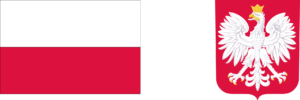Thirty-six years after the Velvet Revolution transformed Czechoslovakia and ended decades of communist rule, Bratislava has unveiled its first permanent memorial to the events of November 1989. The new monument, situated on Námestie Slobody (Freedom Square), stands as both a tribute to the courage of the citizens who rose against totalitarianism and a reminder that democracy must be continuously protected.
This year’s anniversary, marked on November 17, carries special significance for Slovaks. While the Day of the Struggle for Freedom and Democracy remains a state holiday, 2025 is the first year since 2001 when it is not accompanied by a day off work. Despite this change, the spirit of remembrance remains strong. Schools, cultural institutions, and workplaces across the country are holding their own commemorations, while the capital city has become the focal point of events celebrating civic courage and the triumph of truth over oppression.
The newly unveiled memorial at Freedom Square is the first of its kind in Slovakia. Designed by architects Emanuel Zatlukaj and Branislav Lackovič together with sculptor Jakub Trajter, it takes the form of a low cement platform covered with hundreds of bronze footprints. The design recalls the spontaneous mass gatherings of 1989, when protesters stood atop large cement flowerpots—placed there by the regime to prevent demonstrations—and left their marks in the year’s first snow. The creators explain that the pattern of those snow prints became the visual inspiration for the monument, symbolizing both defiance and unity.
At the unveiling ceremony, the song Prayer for Marta—performed by Slovak singer Zuzana Mauréry at exactly 17:11—linked Bratislava and Prague in shared remembrance. Once a forbidden anthem of resistance, the song has come to embody the ideals of peace, dignity, and moral strength that defined the Velvet Revolution.
The idea for the memorial was first proposed by the Initiative for the Memorial of the Democratic Revolution 1989, led by Ján Budaj, one of the movement’s historical leaders. “We want to remember that power comes from citizens, who rose up on the streets and squares of Slovakia against illegitimate state violence, for human and civil rights and freedoms,” Budaj said. The monument’s placement directly opposite the Government Office building underscores this message: that authority must always remain accountable to the people.
Commemorations extend beyond the unveiling ceremony. Throughout November, the Bratislava City Museum is hosting a special programme titled What Remains of November ’89? The project includes public discussions, film screenings, artistic projections on the Old Town Hall façade, and a full-day Freedom Day event at Devín Castle—an iconic site of peaceful demonstrations in 1989. The museum’s director, Zuzana Palicová, emphasized the importance of these events: “We honour values such as freedom and democracy, and we recognise their importance for the progress of society as a whole. This programme celebrates these values while warning of the threats posed by their potential loss.”
The commemorations form part of the broader 2025 Freedom Festival, organized by the Nation’s Memory Institute (ÚPN), which runs from November 3 to 17. Concerts, exhibitions, and cultural performances—such as the alternative music night featuring Zlokot and Blve Velvet, the art event Velvet Saturday at Šafárikovo Square, and the international cartoon exhibition Sneezing Brain—connect history with contemporary artistic expression.
The commemorative spirit will culminate on November 17 with two public gatherings at Freedom Square. The first, organized by the opposition party Progressive Slovakia together with SaS, KDH, and Demokrati, will be followed by a civic event titled In ’89 We Jingled Our Keys for Freedom – Today We Must Defend It, hosted by the Peace for Ukraine initiative. “We will not allow the freedom and dignity we once fought for to be taken from us,” declared activist Lucia Štasselová, emphasizing that democracy requires constant care and vigilance.
The 36th anniversary of the Velvet Revolution thus arrives at a time when Europe once again faces questions about democratic resilience and civic unity. Through its new memorial, exhibitions, and cultural events, Bratislava is not merely celebrating history—it is reaffirming the timeless values that defined November ’89: courage, solidarity, and hope in the power of peaceful change.






